 |
 |
 |
 |

|


|
|
|
|
|
|
#1
|
||||
|
||||
|
DIY - 1987 300D serpentine belt tensioner replacement
This procedure should apply to any OM601, OM602 or OM603 engine.
Parts replaced: tensioner arm, tensioner pulley, tensioner damper. Those who know say MB brand dampers last considerably longer than other brands so there is an economy to the cost premium. Consider upgrading to a two-piece fan shroud if available for your car. Tools used in order of appearance: 13mm wrench, MB lug wrench, flathead screwdriver, 8mm hex key, 3/8" breaker bar, 10mm deep socket, pulley holder, 8mm wrench, 6mm hex bit, 12mm hex bit, 1/2" breaker bar, 1/2" torque wrench. What prompted me to replace the tensioner in my car is the damper ends had been rattling for a couple of months then finally the damper gave up and spewed fluid on the tensioner mechanism. More critically, the tensioner arm bearing was worn out allowing the tensioner arm to wobble. Others note the tensioner pulley axis isn't parallel with the crank axis, a belt that jumps off the pulleys and/or a tensioner arm that clicks as it pivots (by hand, you wouldn't hear it click with the engine running). We'll ignore the leaky head gasket and front crank seal for now. We'll also ignore the used tensioner hardware I'm installing. It was six months new when the 93 SD was totalled and it's greasy because I didn't use any sealer or thread lock when installing it in the SD. And the wire to the temp sensor (mine's a sensor, not a switch) at the thermostat needs to be tied to its clamps. Let's get started... Yuck! What a mess. 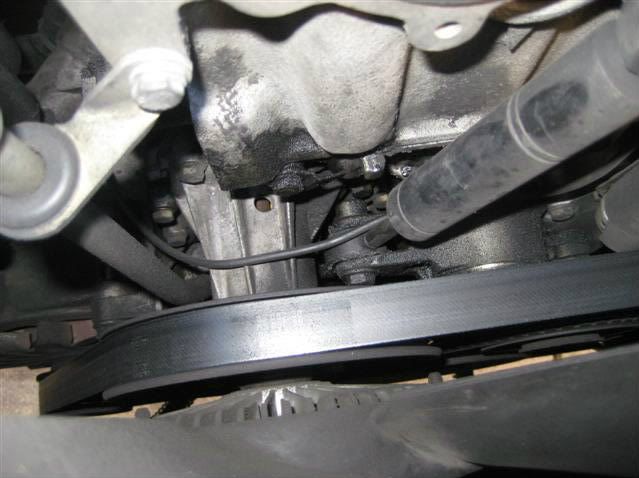 This is the upper attachment of the tensioner mechanism. First thing to do is release the upper spring perch. 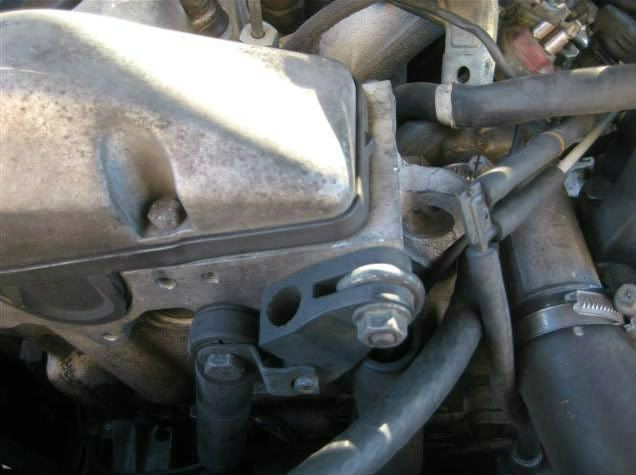 A long bolt through the head holds the spring in tension. The bolt goes in from the back so it cannot be fully removed. It only has to slide back an inch or so and there's plenty room for that. If someone forgot to put the bolt in place while the upper radiator hose fitting was off the head, they probably installed the bolt from the front and it will have to come off completely. Remove the nut.  The upper spring perch has a slot for the MB lug wrench to use as a lever. I used a big screwdriver. Set the lever in the slot and pull towards the passenger side just enough to take the shear off the long bolt then pull back the bolt (or remove it from the front) until the upper spring perch is free of the bolt. 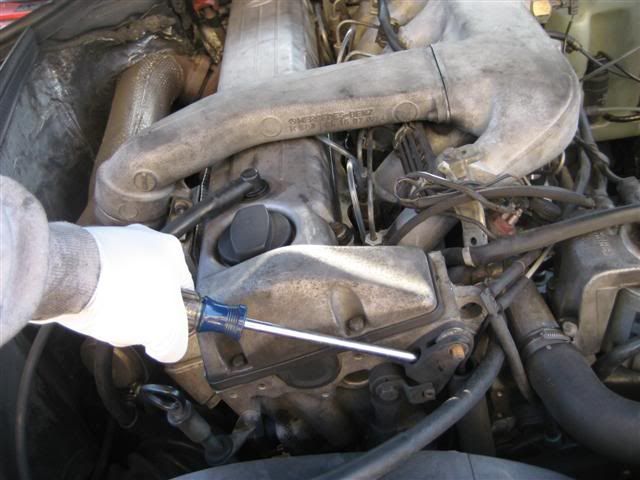 Slowly release the force you apply to the lever. 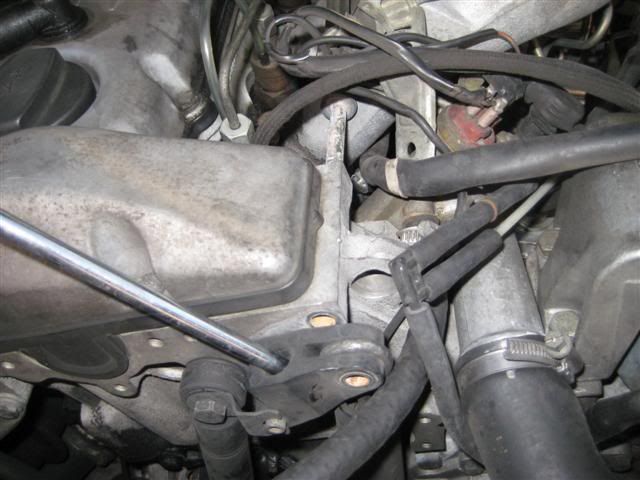 NOTE: this procedure assumes a single piece fan shroud. Some cars have a two-piece fan shroud that can be removed independently of the fan. If you're so lucky, you may laugh at the rest of us. The forward half of the fan shroud is likely held to the radiator the same way as a single piece fan shroud. There are two clips holding the fan shroud to the radiator. Note the alignment of the shroud tabs and the radiator upper frame, scribe witness marks if necessary, then pry off the clips. I used a screwdriver. 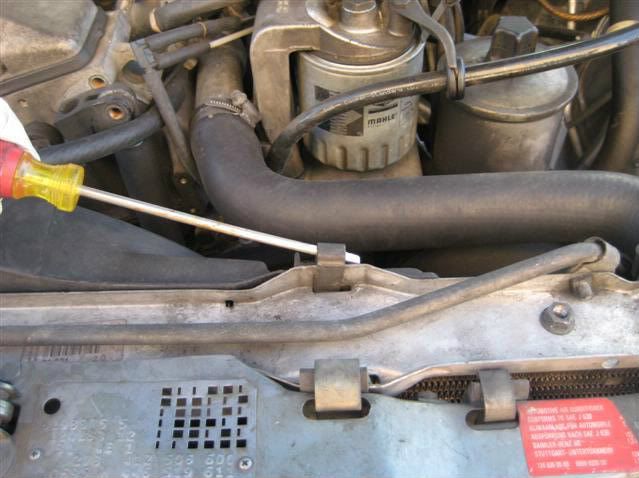 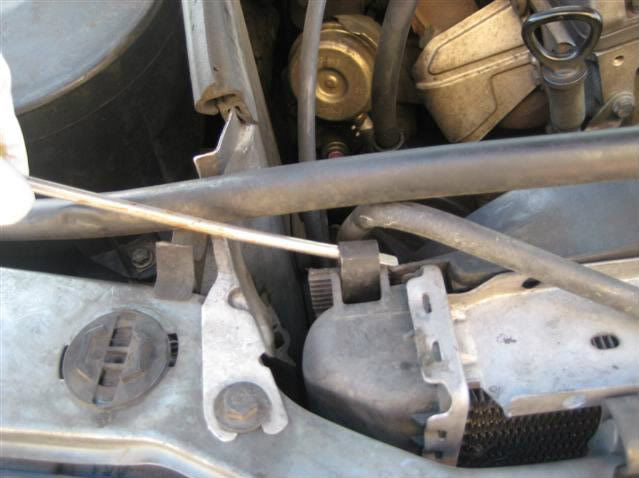 The upper coolant hose between the radiator and the reservoir might be clipped to the radiator shroud. If so, pry off the clip. It'll probably break. I get replacements when I'm at the wrecking yard. 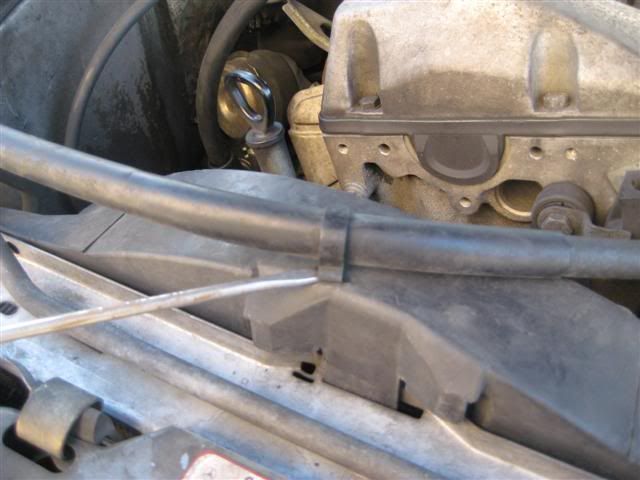 The shroud is held against the radiator by a tab at the top and two tabs below, and the two clips just removed. Lift the shroud to disengage the upper tab. Set the shroud over the fan to give yourself as much room as possible to work between the fan and the radiator. 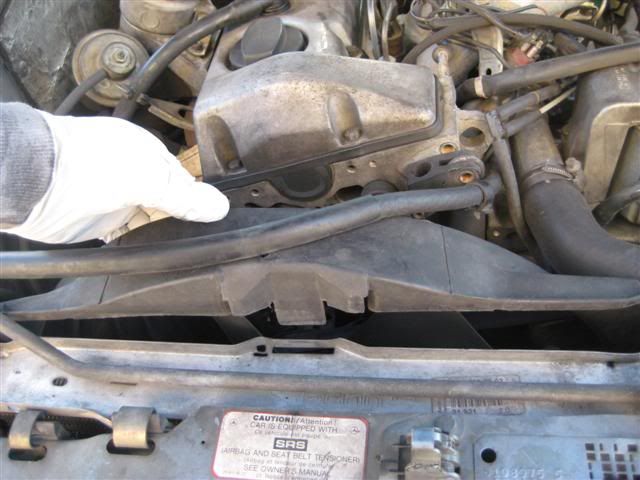 The 300D is as tight as it gets in this regard so you S-classers and 2.5ers should have it better. A prudent person would slip in a board to protect the radiator fins. I am not a prudent person. 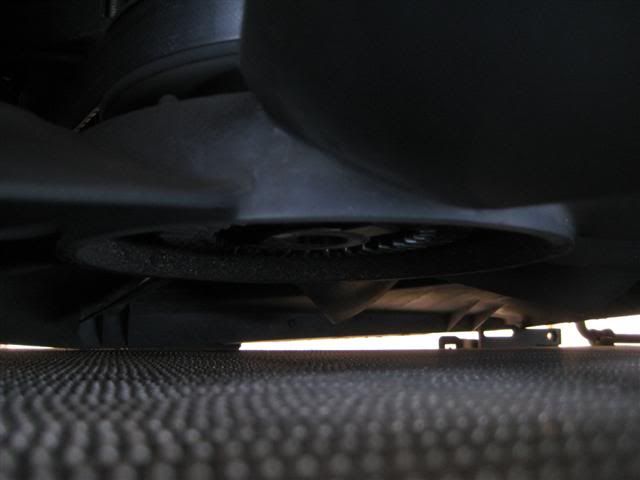 This is the tool I use to release the fan from the water pump pulley. It's composed of an 8mm hex key, a 3/8" breaker bar and a 10mm deep socket. You can buy a obtain 8mm hex bit but if I'm to spend any money on it I'd have the square tip of a ratchet reworked into an 8mm hex. I'll put my money towards a W140 Diesel with more room to work on the fan. 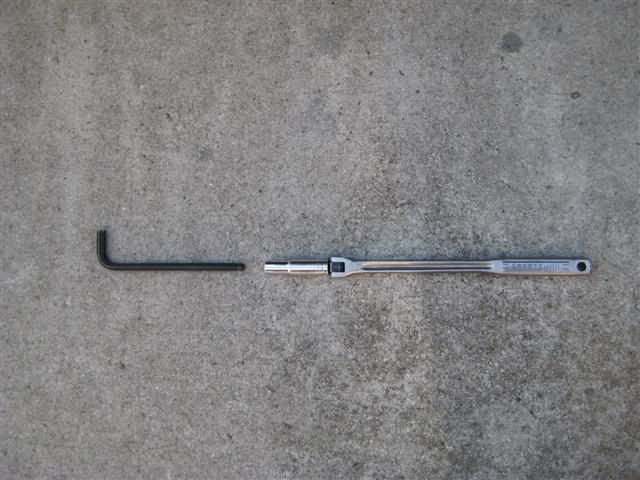 It takes a bit of doing to hook the hex key on the fan bolt mostly because you can't see what you're doing. 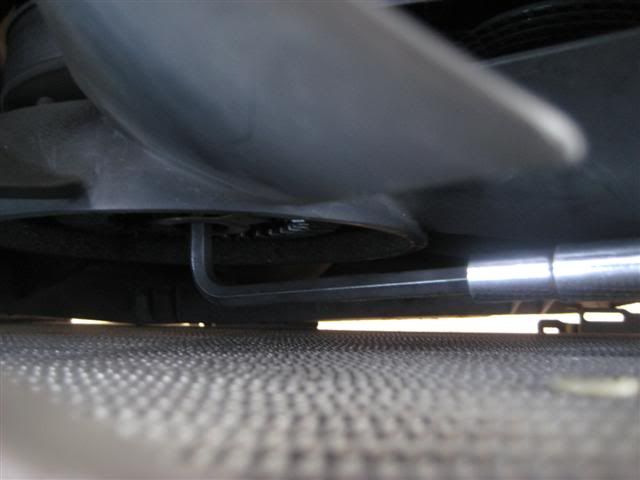 This is the pulley tool that costs $10 or so at Harbor Freight. 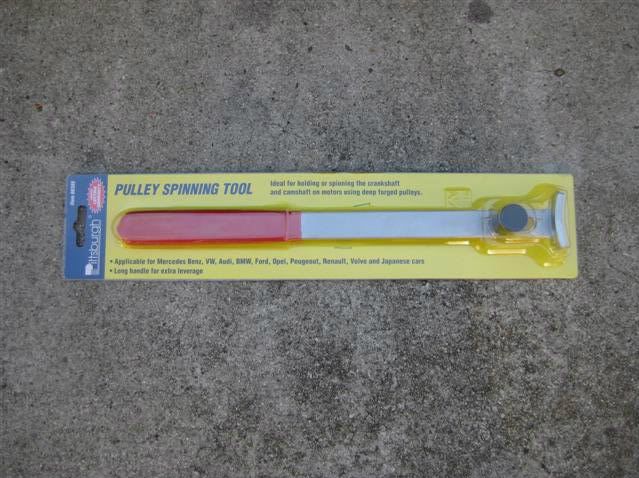 This is the pulley tool in place gripping the water pump pulley between the dipstick tube and belt tensioner damper. I don't bother adjusting the pulley tool roller. It seems to set itself.  Break loose the fan bolt. Regardless of what tool you use, you'll probably run into the puzzle of backing out the bolt beyond the point that you can remove the tool to get the bolt out completely. Once the torque is broken, I use the tool below, comprised of a hex key and an 8mm wrench as a T-handle to back out the bolt to the point that it can be turned by hand. Then I turn it by hand. 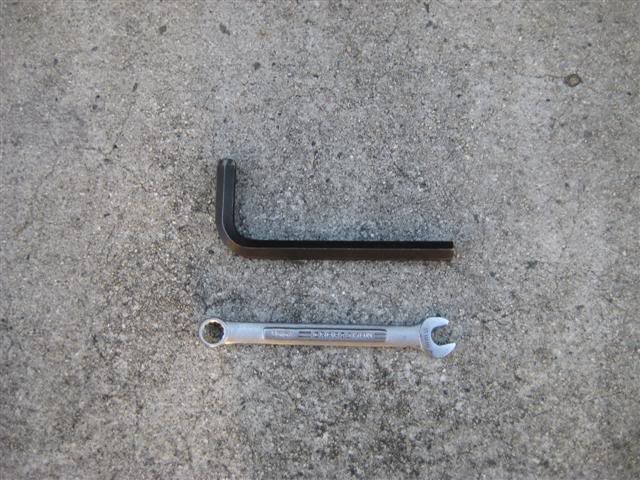 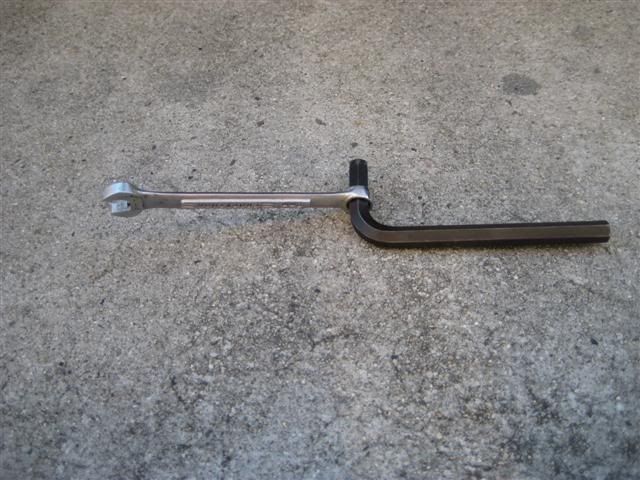 Wiggle the fan shroud and fan out of the engine bay. The main snag is between the upper passenger side corner of the shroud and the radiator cooler line. In this picture I rotated the shroud 45-degrees clockwise then lifted up and out. 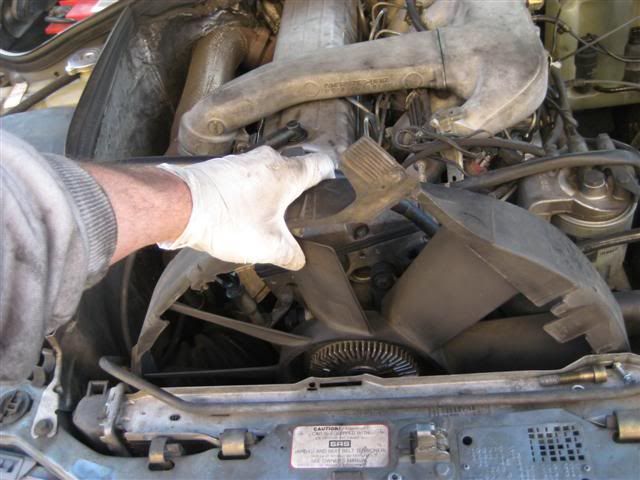 Here's as unobstructed a view of my Gatorback belt as you're going to see. As an aside, this belt has been on my 87 SDL, 93 SD 3.0 and now the 87 300D. Tough belt! 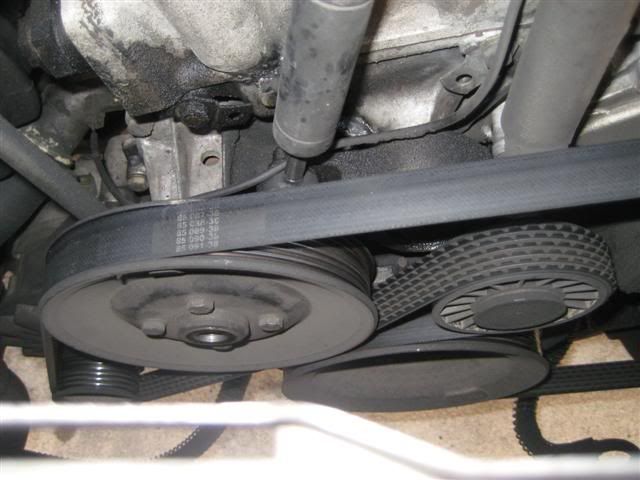 Pull on the belt to release tension. 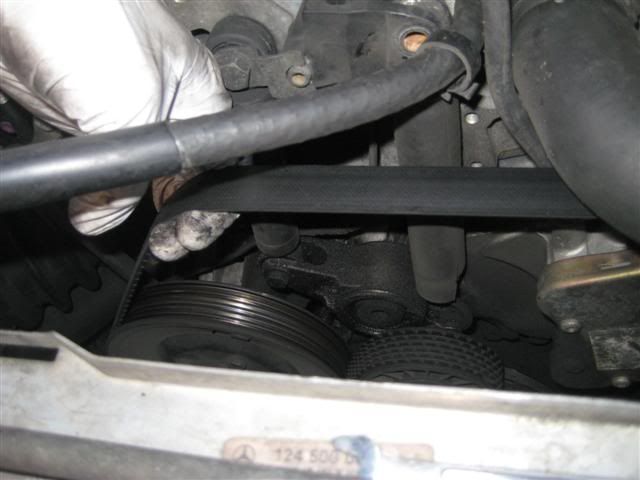 Move the belt away. It doesn't have to come off completely, just off the tensioner pulley. 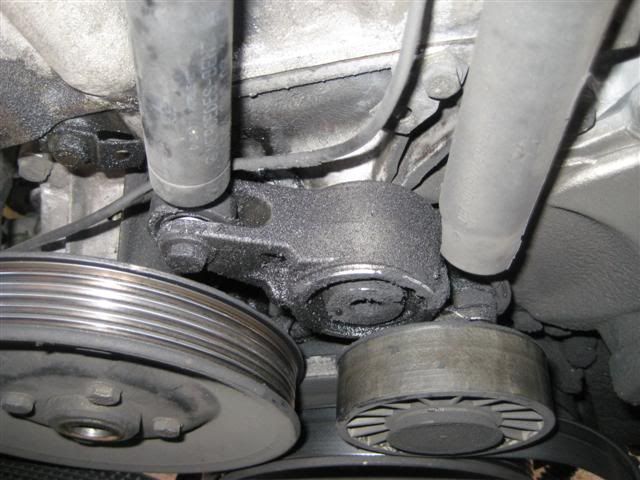 Remove the upper attachment of the tensioner damper with a 13mm wrench. There's a clip that serves as both a washer for the bolt and a retainer for the upper spring perch. Keep track of the clip although it'll probably have made friends with the upper chain guide rail pin extension that serves as the upper spring perch pivot. 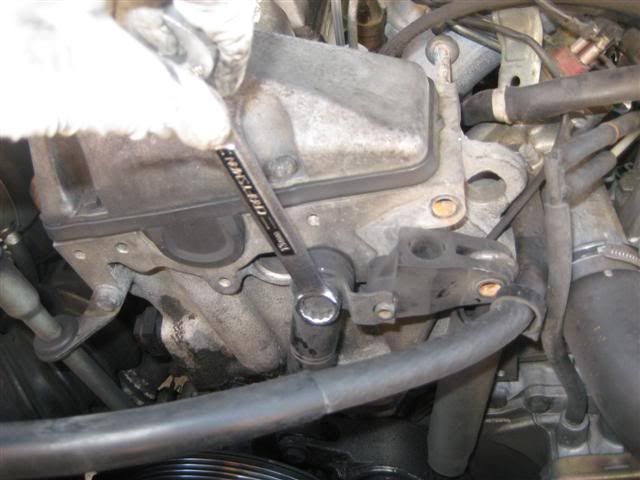 Pull the upper spring perch off its pivot. Unhook the spring from the upper spring perch. You can unhook the spring from its lower perch on the tensioner arm but there's no real need to.  Pry the plastic covers off the tensioner arm and tensioner pulley. There is no cover over the tensioner arm bolt in this sequence. When prying, catch the edge of the cover closest to the pulley (detail in second picture). Don't pry on the lip of the cover. Ignore the hex bit already on the tensioner arm bolt. 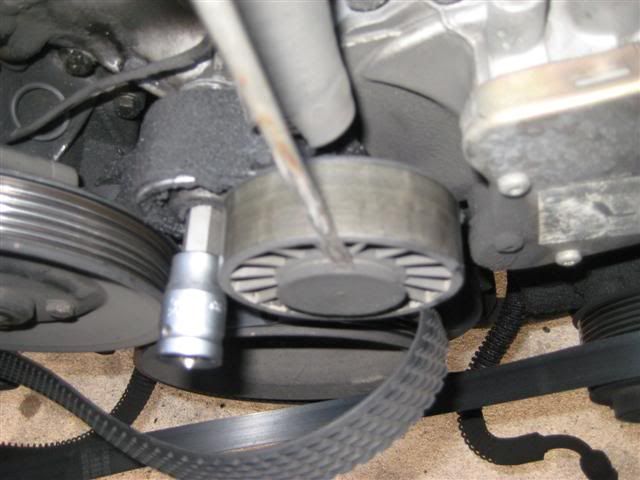 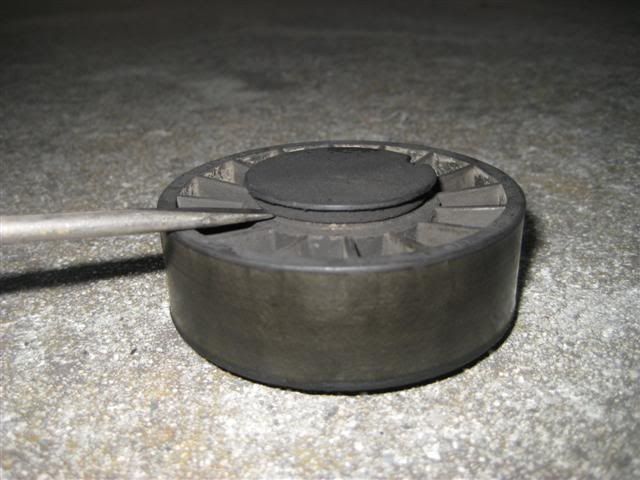 Remove the tensioner pulley bolt with a 6mm hex bit on a breaker bar then remove the pulley. 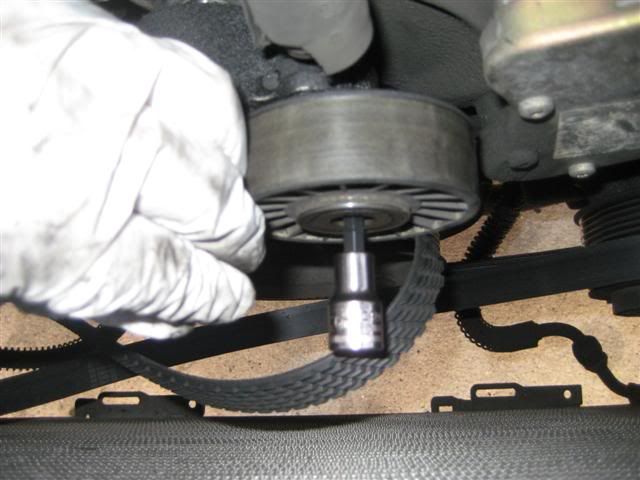 Set the tensioner arm in this orientation then remove the tensioner arm bolt with a 12mm hex bit on a breaker bar. If the tensioner arm is too far CCW, the lower attachment of the damper will catch on the water pump pulley. If the tensioner is too far CW, the lower spring perch will catch on the crank damper. The tensioner arm bolt is captive and the tensioner arm will back out with the bolt so watch that nothing catches. 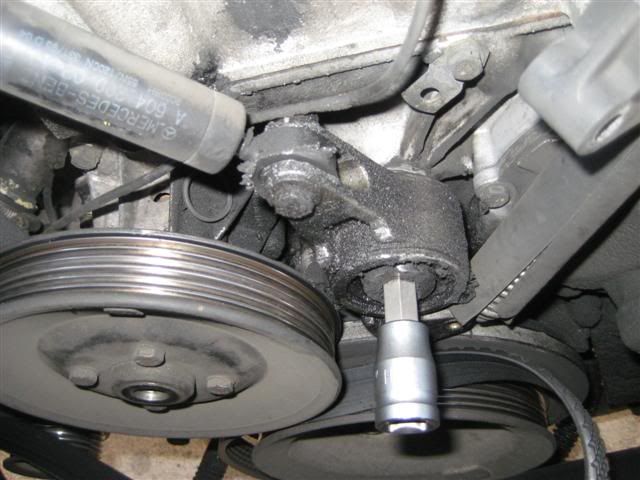 Here's the old tensioner arm with the damper still attached.  Here are the old tensioner arm and new old replacement. Note that the all important thick washer is still on the old tensioner arm. To remove the washer, tap (or bang) the tensioner arm on a solid surface. The washer should fall out.  Installation is the reverse of removal and IMO no more difficult. The FSM calls for Omnifit 100m orange sealant on the tensioner arm bolt threads. I don't know what that is or where to get it but I heard folks use Loktite 271 (red) with no leaks or loosening. There isn't much to say about attaching the damper to the new tensioner arm. The shiny rod end attaches to the tensioner arm. You can install the damper after torquing the tensioner arm to the engine. Torque specs are 100Nm for the tensioner arm bolt, 25Nm for the tensioner pulley and damper bolts and 10Nm for the upper spring perch long bolt. The exception is the 603.971 (W140 SD) which takes 30Nm for the tensioner pulley. Note the two tabs at the bottom of the fan shroud that fit into corresponding slots in the bottom frame of the radiator. If the encapsulation panel is off or you don't have one, peek from below to ensure the tabs engage properly. Re-establish shroud alignment using your memory or witness marks to ensure the fan doesn't hit the shroud. 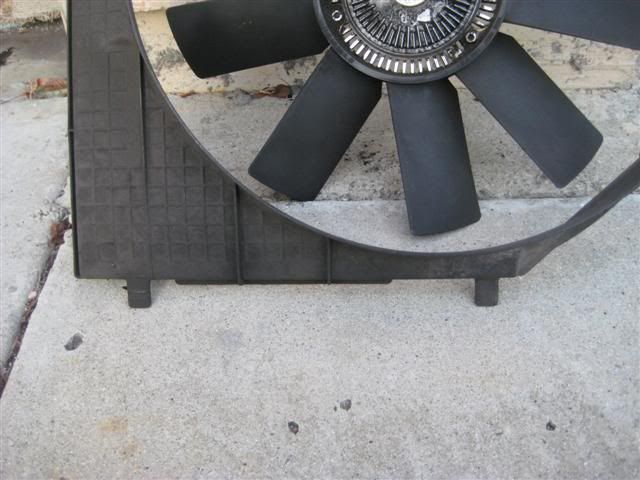 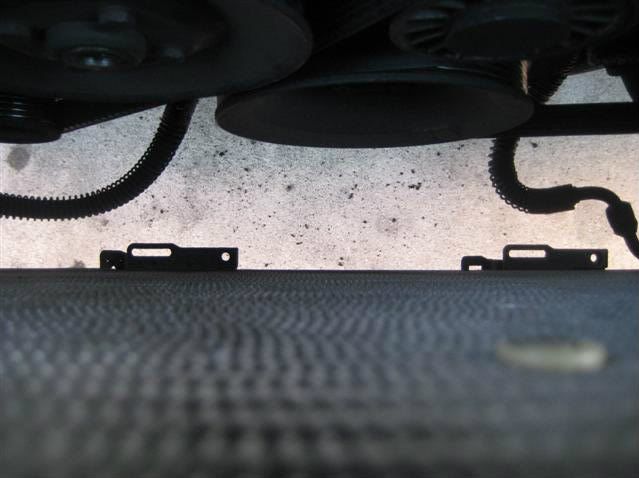 Sixto 87 300D |
| Bookmarks |
|
|